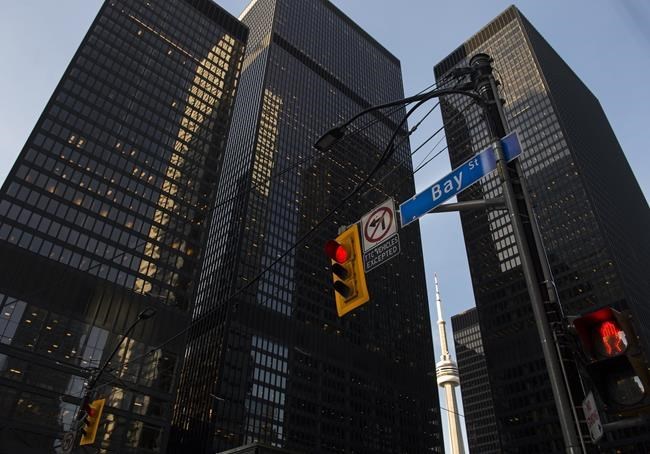TORONTO ŌĆö North American stock markets partially bounced back from disappointing news Wednesday of a supersized interest rate by the Bank of sa╣·╝╩┤½├Į and hotter than expected U.S. inflation numbers.
Markets plunged out of the gate in the morning after the June U.S. consumer price index numbers exceeded expectations, with inflation in that country reaching a 40-and-a-half year high of 9.1 per cent.
And the Canadian central bank hiked rates by a full percentage point, its largest increase since August 1998.
But markets crept back from the early lows to move into positive territory before closing lower.
"It looks like one of those days where it ain't over till it's over," said Michael Currie, vice-president and investment adviser at TD Wealth.
"It seems like everything that happened in the morning is kind of pulling back in the afternoon."
The S&P/TSX composite index closed down 63.45 points to a 16-month low of 18,615.19 after hovering between an intraday low of 18,378.83 and a slight increase on the day.
In New York, the Dow Jones industrial average was down 208.54 points at 30,772.79. The S&P 500 index was down 17.02 points at 3,801.78, while the Nasdaq composite was down 17.15 points at 11,247.58.┬Ā
Currie said the high U.S. inflation numbers knocked everything down in the morning, "which kind of made sense 'cause it's a pretty rough report."
"The inflation number would seem to indicate a pretty high interest rate hike for the Fed in the next couple of weeks," he said in an interview.
Analysts expect the U.S. central bank will increase interest rates by three-quarters of a percentage point on July 27, but the odds of a full percentage point increase like the Bank of sa╣·╝╩┤½├Į's hike are increasing.
Currie said the substantial Bank of sa╣·╝╩┤½├Į rate increase was a huge story and elicited calls from concerned clients seeking advice on how they should respond.
"A big, big story even amongst the average retail investor who has been struggling with incredibly low rates for years and years and years. They're getting a bit of a break here with some decent rates for a change."
The heavyweight financial sector was the weakest on the day, losing 1.2 per cent as all banks were lower ŌĆö with CIBC and Bank of Montreal weakest in losing 1.7 per cent.
The bond yields remained inverted with the gap between the two-year and 10-year U.S. rates reaching its widest level since 2000. It's a sign of a possible recession.
In addition, the euro fell below parity against the U.S. dollar for the first time this century.
"That's a pretty major benchmark move for them and just keeps proving more that people are heading to the U.S. dollar for safety," said Currie.
It also reflects problems in Europe where the economy is so tenuous that its central bank won't be able to raise rates as fast as in the U.S., he added.
Energy slipped, even though crude oil prices were higher despite negative news such as higher-than-expected U.S. inventories last week. The U.S. dollar continues to be strong and OPEC and the International Energy Agency said demand is weakening.
Shares of Cenovus Energy Inc. lost 1.9 per cent on the day.
The August crude contract was up 46 cents at US$96.30 per barrel and the August natural gas contract was up 52.6 cents at US$6.69 per mmBTU.┬Ā
The Canadian dollar traded for 77.07 cents US compared to 76.83 cents US on Tuesday.┬Ā
Consumer staples was the biggest gainer on the day, climbing 1.8 per cent as shares of Loblaw Cos. Ltd. increased 3.5 per cent.
The materials sector, which includes miners, forestry producers and fertilizer companies, rose 1.2 per cent on higher bullion and copper prices.
The August gold contract was up US$10.70 at US$1,735.50 an ounce and the September copper contract was up 3.5 cents at US$3.32 a pound.┬Ā
Seabridge Gold Inc. and New Gold Inc. led the way, gaining 14 and 13 per cent, respectively.
This report by The Canadian Press was first published July 13, 2022.┬Ā
Companies in this story: (TSX:CM, TSX:BMO, TSX:L, TSX:CVE, TSX:SEA, TSX:NGD, TSX:GSPTSE, TSX:CADUSD=X)┬Ā
Ross Marowits, The Canadian Press



